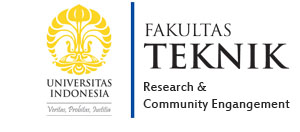| Authors | Nandy Putra, Wayan Nata Septiadi |
|---|---|
| Publication Name | Heat and Mass Transfer/Waerme- und Stoffuebertragung |
| Abstract | The very high heat flux dissipated by a Central Processing Unit (CPU) can no longer be handled by a conventional, single-phased cooling system. Thermal management of a CPU is now moving towards two-phase systems to maintain CPUs below their maximum temperature. A heat pipe is one of the emerging cooling systems to address this issue because of its superior efficiency and energy input independence. The goal of this research is to improve the performance of a heat pipe by integrating a biomaterial as the wick structure. In this work, the heat pipe was made from copper pipe and the biomaterial wick structure was made from tabulate coral with a mean pore diameter of 52.95 μm. For comparison purposes, the wick structure was fabricated from sintered Cu-powder with a mean pore diameter of 58.57 µm. The working fluid for this experiment was water. The experiment was conducted using a processor as the heat source and a plate simulator to measure the heat flux. The utilization of coral as the wick structure can improve the performance of a heat pipe and can decrease the temperature of a simulator plate by as much as 38.6 % at the maximum heat load compared to a conventional copper heat sink. This method also decreased the temperature of the simulator plate by as much as 44.25 °C compared to a heat pipe composed of a sintered Cu-powder wick. |
| Publisher | Springer Verlag |
| ISSN | 09477411 |
| Page | 1-12 |
| Volume | --- |
| Impact Factor (JCR) | --- |
| SJR | 0.53 |
| Ranking Quartile | Q2 |
| Website | https://www.scopus.com/record/display.uri?eid=2-s2.0-84982273906&origin=resultslist&sort=plf-f&src=s&sid=0E34819DA9FFC0072EE0364F438C6379.wsnAw8kcdt7IPYLO0V48gA:20&sot=autdocs&sdt=autdocs&sl=17&s=AU-I |
Improvement of heat pipe performance through integration of a coral biomaterial wick structure into the heat pipe of a CPU cooling system
LATEST POST
CALL FOR PROPOSAL: Penerimaan Hibah Seed Funding Publikasi FTUI 2025
CALL FOR PROPOSAL: Penerimaan Hibah Osaka Gas Tahun 2025
6 Dosen Fakultas Teknik Universitas Indonesia Catatkan 8 Paten
Mahasiswa FTUI Kaji Potensi Hidrogen Alami di Sulawesi, Didorong Jadi Rujukan Kebijakan Nasional
Mahasiswa FTUI teliti potensi hidrogen geologis pertama di Indonesia
POPULAR NEWS
LATEST VIDEOS
LOGIN






